When you ask gardening experts, ‘Why are my honeysuckle leaves turning purple?’ They will probably tell you that honeysuckle leaves can turn purple due to various reasons, including nutrient deficiencies, pH imbalance, overwatering, pests, diseases, or genetic factors.
Even if it’s not a very common problem of a Honeysuckle plant, you should have a clear idea of this fact. Make sure to check all the information below to learn about the problems briefly.
Is It Normal to Have Purple Leaves on My Honeysuckle Plants?
Some honeysuckle varieties naturally have purple-tinged leaves, which is a normal characteristic of those cultivars. If the purple coloration is uniform and the plant appears healthy, it is likely part of its normal appearance.
However, if a honeysuckle plant that typically lacks purple leaves shows significant discoloration or changes in leaf color, it may indicate an underlying issue such as stress, nutrient deficiencies, pests, or diseases.
To confirm whether the purple leaves are normal for your specific honeysuckle, research the cultivar or consult with a local horticulturist. Regular observation and proper care will help distinguish between natural traits and potential problems.

You may also find this post helpful if you are interested in orchids, Orchid Roots Are Turning Brown
Reasons Why My Honeysuckle Leaves Are Turning Purple
There are several potential reasons why your honeysuckle leaves may be turning purple. Check some of them out below;
- Genetic factors: Some honeysuckle varieties naturally have purple-tinged leaves as part of their normal appearance.
- Nutrient deficiency: A lack of essential nutrients like phosphorus, potassium, or iron can lead to purple discoloration in the leaves.
- pH imbalance: Honeysuckles prefer slightly acidic to neutral soil (pH 6.0 to 7.0). If the soil becomes too acidic or alkaline, it can affect nutrient uptake, leading to purple leaves.
- Overwatering or underwatering: Improper watering practices can stress the plant, leading to purple leaves. Overwatering can suffocate the roots, while underwatering can cause nutrient deficiencies.
- Pests and diseases: Insects like aphids or mites, as well as fungal diseases, can affect the plant’s health and cause leaf discoloration.
- Environmental stress: Extreme temperatures, especially cold weather, can cause stress to the honeysuckle plant and result in purple leaves.
To address the issue, consider testing the soil pH, adjusting watering practices, providing proper nutrients through fertilization, and inspecting the plant for signs of pests or diseases.
If the problem persists, seek advice from a local horticulturist or gardening expert for tailored solutions.
Honeysuckle Leaves Turn Purple: Reasons and Solutions At a Glance
Here is a table that provides a quick overview of potential reasons for honeysuckle leaves turning purple and their corresponding solutions.
| Reasons for Purple Leaves | Possible Solutions |
| Genetic factors | No action is needed; it’s a natural trait of the variety. |
| Nutrient deficiency | Apply balanced fertilizer as per the manufacturer’s instructions. |
| pH imbalance | Test soil pH and adjust using suitable amendments. |
| Overwatering or underwatering | Adjust watering practices; ensure proper drainage. |
| Pests and diseases | Inspect the plant regularly and use appropriate treatments. |
| Environmental stress | Provide protection during extreme weather conditions. |

What to Do When My Honeysuckle Leaves Are Turning Purple
When you notice your honeysuckle leaves turning purple, it’s essential to take action to address the underlying issue. Here are the steps you can follow:
Step 1
Inspect the Plant: Begin by closely examining the affected honeysuckle plant. Look for signs of pests, diseases, or any visible damage on the leaves, stems, and flowers.
Step 2
Check Soil Moisture: Evaluate the soil moisture levels around the plant. Make sure you are not overwatering or underwatering it. Honeysuckles prefer evenly moist, well-draining soil.
Step 3
Test Soil pH: Use a soil testing kit to check the pH level of the soil. Honeysuckles thrive in slightly acidic to neutral soil with a pH range of 6.0 to 7.0. Adjust the pH if it is too acidic or alkaline.
Step 4
Fertilize Appropriately: If nutrient deficiency is suspected, apply a balanced fertilizer formulated for flowering plants. Follow the manufacturer’s instructions regarding application rates and frequency.
Step 5
Check for Pests and Diseases: Then, inspect the plant for common pests like aphids, and mites, or diseases like powdery mildew. If you find any, treat the honeysuckle with suitable insecticides or fungicides as needed.
Step 6
Pruning and Cleaning: Also, remove any damaged or diseased parts of the plant by pruning. This will help improve airflow and prevent the spread of pests or diseases.
Step 7
Protect from Extreme Weather: If the discoloration is due to environmental stress, such as extreme temperatures, consider providing some protection to the plant during adverse weather conditions.
Step 8
Monitor and Observe: After taking corrective actions, monitor the honeysuckle regularly. Watch for any improvement or further changes in the plant’s health and appearance.
Step 9
Seek Expert Advice: If you are unsure about the cause of the purple leaves or the appropriate course of action, consult with a local horticulturist or gardening expert for personalized guidance.
By promptly identifying and addressing the issue, you can help your honeysuckle recover and continue to thrive. Remember to maintain regular care and keep an eye on its overall health to prevent future problems

Honeysuckle Plants Maintenance Tips
Maintaining honeysuckle plants doesn’t require extensive effort, but regular care is essential to keep them healthy and thriving. Here are some maintenance tips for honeysuckle plants:
- Planting Location: Choose a suitable location that receives partial to full sun. Honeysuckles prefer well-draining soil, so ensure the planting area has good drainage.
- Watering: Water the honeysuckle plant regularly, especially during dry spells. Keep the soil evenly moist but not waterlogged. Avoid overwatering, as it can lead to root rot.
- Mulching: Apply a layer of organic mulch around the base of the plant to conserve moisture, suppress weed growth, and maintain a more consistent soil temperature.
- Fertilization: Use a balanced fertilizer specifically formulated for flowering plants. Apply it according to the manufacturer’s instructions, usually in the growing season.
- Pruning: Regular pruning is beneficial for honeysuckles. Prune after flowering to shape the plant, remove dead or diseased wood, and encourage new growth. Some varieties might require more aggressive pruning to prevent them from becoming too invasive.
- Support Structure: Depending on the type of honeysuckle, provide a suitable support structure such as a trellis, fence, or arbor for the vines to climb.
- Pest and Disease Control: Regularly inspect the plant for signs of pests, like aphids or spider mites, and diseases like powdery mildew. If detected, take appropriate measures using insecticides or fungicides.
- Winter Care: Some honeysuckle varieties are hardy, while others might need protection during harsh winters. Mulch around the base of the plant and consider covering it with burlap during extreme cold.
- Regular Monitoring: Observe your honeysuckle regularly to detect any issues promptly. Monitor its growth, flowering, and overall health.
- Deadheading: After the flowering season, consider deadheading (removing faded flowers) to encourage further blooming and prevent self-seeding.
- Propagation: If desired, honeysuckle plants can be propagated through cuttings or layering. Research the appropriate method for your specific honeysuckle variety.
- Supportive Pruning: If your honeysuckle is a variety that blooms on new wood, consider giving it a hard pruning in late winter or early spring to encourage robust growth and more blooms during the growing season.
By following these maintenance tips and providing proper care, your honeysuckle plant should reward you with lovely blooms and a healthy appearance. Regular attention and love will keep your honeysuckle thriving for years to come.
FAQs
Can overfertilization cause purple leaves on honeysuckle plants?
Yes, overfertilization can lead to nutrient imbalances, resulting in purple leaves. Follow recommended fertilization rates and schedules to avoid excessive nutrient intake.
How can I differentiate normal purple leaves from a problem with my honeysuckle plant?
Normal purple leaves are consistent across the plant and won’t cause harm. If leaves show irregular, intense, or worsening discoloration, it might signal a problem. Observe the overall plant health and consider consulting an expert if unsure.
Could my honeysuckle’s purple leaves be a sign of transplant shock?
Yes, transplant shock can lead to stress and purple discoloration in leaves. When moving honeysuckle, ensure proper care during and after transplantation to minimize shock and aid in its successful establishment.
Did you enjoy the article? If you did, you can also read this helpful Jewel Orchid care post. Thank you for supporting us.
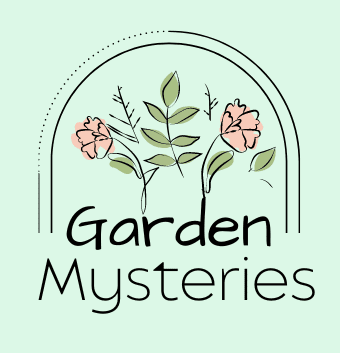

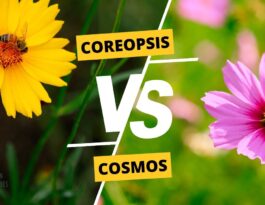
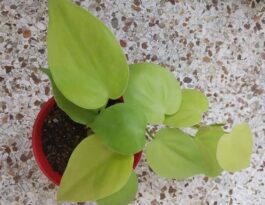
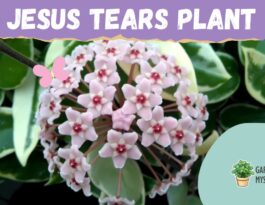
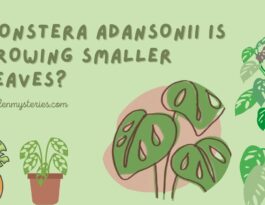
[…] Finally, after choosing between Jasmine or Honeysuckle you can explore our previous post on purple honeysuckle leaves issue. […]